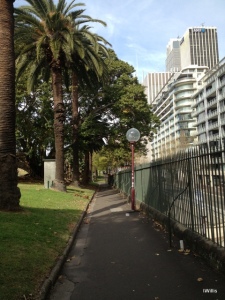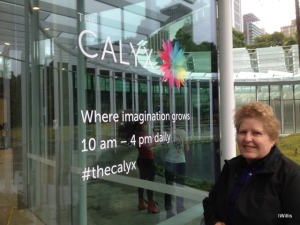The day sport was banned on Onslow Park
Camden has a fine tradition of sport dating back into the 19th century. But one day in 1925 Camden’s civic leaders banned Sunday sport at Onslow Park.
There was no public outcry. There were no protests in the street. It passed without a murmur.
So what prompted this momentous decision?

A letter to Camden Municipal Council in early 1925 from Rev CJ King, rector of St Johns Church, and Rev AH Johnstone, minister at the Camden Methodist Church, complained about a clash between religious services held on Onslow Park and a number of Sunday cricket matches. (Camden News, 26 February 1925)
The 1925 ban Sunday sport erupted after the Camden Mayor, GF Furner, granted permission for religious services on Sundays at Onslow Park. There had subsequently been a clash between local cricketers and religious services in January 1925 using the ground. (Camden News, 26 February 1925)
Originally Onslow Park had been made available to the Camden community by Sir William Macarthur and Mrs Elizabeth Onslow in 1882 from their pastoral property of Camden Park. The 10 acres had been put into a trust (a deed of gift) that allowed the area to be used by ‘inhabitants and visitors to the town and district as a pleasure ground and place of recreation’. The trustees were JK Chisholm, HP Reeves, E Simpson, and F Ferguson. (Camden News, 16 September 1897)
Recreation Grounds
William Theobald writes that recreation grounds date back to the ancient Sumerians and Egyptians around 2000 BC. During Ancient Greek and Roman times these parks and open spaces were the privilege of the elites. In England the story of recreation grounds dates back to the 14th century when wasteland, or the local village common, reserved for grazing cows was made available for children’s play and ‘young people’ (men) after the days work.
London’s Royal Parks were opened to the public on Sundays with the first being Hyde Park in 1635. Urban recreation grounds were a Victorian innovation in response to the unhealthy aspects of the Industrial Revolution and the desire by Victorians to improve the physical and spiritual well-being of town dwellers. St James Park in London was the first public park opened in 1835.
Pleasure Ground
The concept of a public pleasure ground outlined in the Onslow Park 1882 Deed of Gift dates back to Ancient Romans and usually related to landscaped gardens. In England pleasure grounds were gardens opened for entertainment and recreation from the 18th century and often had concert halls, bandstands, zoos, amusement rides and menageries.
These were the influences and traditions that encouraged the Macarthur family to dedicate Onslow Park to the Camden community in 1882. The family were always interested in improvements in the well-being of the local population.

The earliest references to Camden sport on Onslow Park date back to the mid-1890s with local football matches. There was a press report of a lively rugby match between Camden and Campbelltown and consideration was given to the formation of the football club. (Camden News, 13 June 1895)
The Camden cricketers had the use of the grounds on a regular basis with the first reports in the Camden press to cricket being played on Onslow Oval in 1895. (Camden News, 1 August 1895)
Onslow Park Act 1924 (NSW)
The background story of the Sunday sporting bans had been complicated when the responsibility for Onslow Park had been transferred to the council from the Onslow Park Trust and the Camden AH&I Society in 1924 by an act of parliament. The New South Wales government specified in the Act that the ground was to be used for ‘public recreation’ (Onslow Park Act 1924 (NSW)). The ground trust was represented by FA Macarthur Onslow of Camden Park, and the Camden AH&I Society by GM Macarthur Onslow, and TC Barker of Maryland.
The Sunday ban on sport lasted into World War Two and only changed after it was challenged by Camden barber Albert Baker when he established the Camden Soccer Club in 1943. He wanted to encourage Sunday sporting matches between the Camden civilian population and personnel at local defence establishments. These establishments included the RAAF Base at Camden Airfield, the Narellan Army Camp and the Eastern Command Training School at Studley Park, Narellan.

Even earlier war the Sunday sporting ban had remained in place after Rev AE Putland from the Camden Methodist Church had raised objections to Sunday cricket in 1941.(Camden News 13 March 1941)
‘Too hot to handle’
Baker’s challenge to the sporting ban was discussed by Camden Municipal Council in mid-1943 when a rescission motion was placed on the council business papers.
The rescission motion was highly contentious and was considered ‘too hot to handle’ by council aldermen.
The proposed solution was a referendum.
The opposing camps divided on religious lines. The Methodists conducted the ‘No’ campaign and handed out literature in Argyle Street. The ‘Yes’ vote was supported by the soccer club, St John’s Church of England and their supporters. There were heated letters in the Camden News, and George Sidman, its owner and an active Methodist, remained impartial during the whole debate.
Eventually common-sense prevailed and the result was a resounding ‘Yes’, with 393 votes, to 197 ‘No’ votes, and as far as Sidman was concerned that was the end of the matter. The soccer competition between the military and the Camden community proved to be a complete success. (Camden News, 1 July 1943, 15 July 1943, 22 July 1943, 29 July 1943, 5 August 1943.)
Other communities with defence establishments did not have similar problems. For example at Temora RAAF airmen became involved in cricket and tennis, and Women’s Australian Auxiliary Air Force (WAAAF) personnel played basketball, while in Albury the military joined local sporting competitions (Maslin, Wings Over Temora, p. 29; Pennay, On the Home Front, p. 32.).











You must be logged in to post a comment.